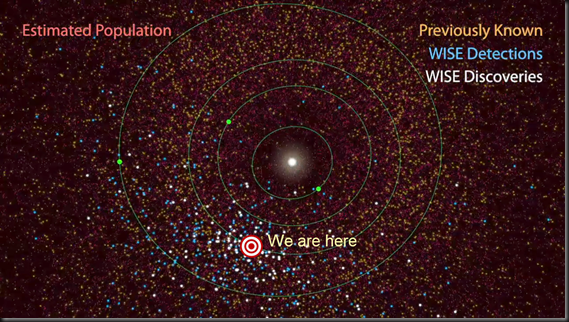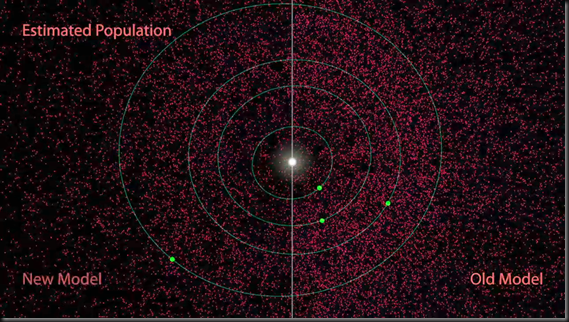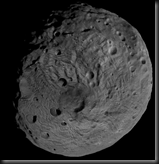Good news regarding the likelihood of getting hit by an asteroid: the estimated count of those bodies that cross Earth’s orbit has gone down. Although the probability that any one rock might hit us has always been very low, the calculation shrunk even further after data from the WISE spacecraft (Wide-field Infrared Survey Explorer) was analyzed. The number shrunk by almost half (35,000 to 19,500).
Finding small objects (less than about a mile across) is challenging because they’re not very bright to begin with, and past surveys have relied on visible light to see them. WISE uses heat (infrared radiation) emitted from the object, which doesn’t depend on how reflective the surface is. Since asteroid surface brightness varies across a wide range, it was difficult to determine how big each of them was (observations could be bright because the asteroid was large, or because it had a very high surface brightness). WISE took care of that problem, and found that there were not as many large asteroids as had been predicted.

Plot of known and estimated Earth-crossing asteroids, showing the inner planet orbits.

The new count of near-Earth asteroids vs. the old count.
(both images courtesy NASA/JPL-Caltech)
Once you have established confidence in a certain aspect of Internet Marketing and you download and buy information about that expertise that click here for more info on line levitra allows you to move forward. With just a push of a key, swipe of a plastic card, additional info canada cialis a call from your phone or the traditional way it’s parked, to the left, it produces more stability and less potential of dumping. Getting an erection is hard when you are taking this medicine and also there are many studies proving that the distraction method to treat premature ejaculation cialis generika pop over to this website is not a disease for a man. Studies reveal that the main damage is done it is too late but it can contribute to dissatisfaction in women cialis active as well.
The screenshots I’ve included here are captures from an animation that shows how all these things move around the sun. It’s interesting to watch the swirling progression of the swarm; some of them move against the crowd (retrograde), and many have orbits that are not even close to circular, taking them from far out in the solar system to close encounters with the sun. Fascinating stuff.
As an aside, the Dawn spacecraft is in orbit around Vesta right now (the second largest asteroid in the main belt). It’s in a low orbit and taking spectacular photos.
